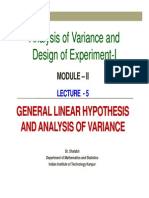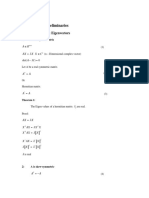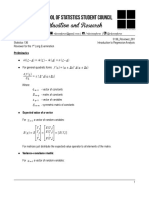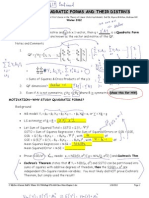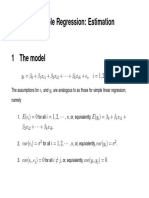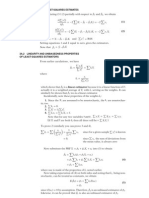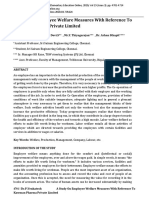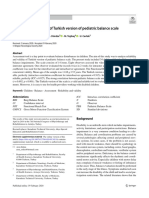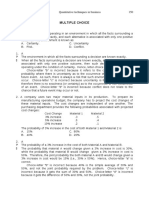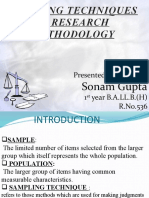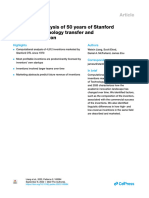0% found this document useful (0 votes)
67 views10 pagesLecture3 Module1 Anova 1
- The linear model relates observations Y to unknown parameters β through a linear combination of known values and random errors. It can be written as Y = Xβ + ε where X is a design matrix and ε is random error.
- Estimable functions are linear combinations of parameters λ'β that can be estimated using linear combinations of observations A'Y. The best linear unbiased estimate (BLUE) of an estimable function is its ordinary least squares estimate.
- In the linear model, the least squares estimate β^ minimizes the error sum of squares and is given by the normal equation X'Xβ^ = X'Y. β^ is an unbiased
Uploaded by
Deep DmCopyright
© © All Rights Reserved
We take content rights seriously. If you suspect this is your content, claim it here.
Available Formats
Download as PDF, TXT or read online on Scribd
0% found this document useful (0 votes)
67 views10 pagesLecture3 Module1 Anova 1
- The linear model relates observations Y to unknown parameters β through a linear combination of known values and random errors. It can be written as Y = Xβ + ε where X is a design matrix and ε is random error.
- Estimable functions are linear combinations of parameters λ'β that can be estimated using linear combinations of observations A'Y. The best linear unbiased estimate (BLUE) of an estimable function is its ordinary least squares estimate.
- In the linear model, the least squares estimate β^ minimizes the error sum of squares and is given by the normal equation X'Xβ^ = X'Y. β^ is an unbiased
Uploaded by
Deep DmCopyright
© © All Rights Reserved
We take content rights seriously. If you suspect this is your content, claim it here.
Available Formats
Download as PDF, TXT or read online on Scribd
/ 10


